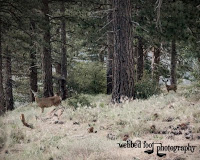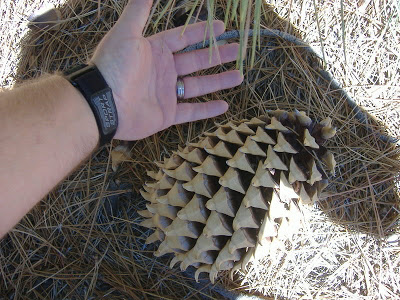
Almost two years after the Station fire scorched 161,000 acres of the Angeles National Forest, the U.S. Forest Service has embarked on a large-scale reforestation project that may re-engineer the region’s historical pine and fir woodlands.The project… aims to plant 3 million pine and fir trees over 10,000 acres scarred by the fire in an attempt to restore the area and offset greenhouse-gas emissions from a refinery in El Segundo.The campaign is the first major ecological response to a historic arson fire that burned for weeks, claimed the lives of two firefighters and cost more than $95 million to battle, leaving an area roughly the size of Chicago blackened.
This disturbs me a lot, because the USFS knows better. Nature has time. Planting locally derived native trees like Grey (foothill) pine and Big cone pine seedlings are the only acceptable plantings. So what if it takes another year to collect and sprout local seeds, do it right or stay the heck out! Let nature recover alone, and recover better absent this ill considered, invasive planting(s), a total waste of Forest Service personnel valuable time, tight tax money, and misuse of well intentioned volunteer efforts.
I am excited to get out there and start helping with the recovery and to start scouting the area again.
 |
| Some of the pine cones out here are gigantic. |
Native American naturalist and reforestation project supporter, Corina Roberts is quoted as saying something that truly bothers me as a human being.
“Nature can and does regenerate on her own,” said Roberts, whose photographs are on the Forest Service website. “But I also believe that planting trees can help satisfy a need people have to do something good and important for a forest that was so hideously burned.”
Really? Satisfying a need over nature recovering on her own? It’s like the story of the farmer who comes across a butterfly struggling to escape from it’s chrysalis. He cuts open the shell to allow the butterfly to escape and the butterfly promptly falls to the ground and dies. The moral of the story is that nature needs to struggle to become strong to do what it needs to do. Helping it along in the wrong way can cause irreversible damage.
How do you guys feel about the planting of non-native seedlings and spurring the recovery effort along? I am very curious to hear what you all have to say. I’ll admit, I am ignorant when it comes to environmental issues such as this one and with tomorrow being Earth Day I hope you all chime in.
Al, this a very thought provoking article. Like you, I will admit that I am ignorant about the finer details of such ecology, but I also agree with you that in most matters, nature can (and should) take care of its own. However, that isn't to say that we have no part to play in the well being of nature.
Nature and man are interconnected, and while I don't agree with those who tend to elevate nature above man, I also don't think that man should be interfering with or trying to control nature on large scale.
I love that analogy you shared of the butterfly. I haven't heard that one before. Sometimes I think we are entirely to proud of ourselves and our science, or as a friend of mine says, we are "educated beyond our intelligence."
Al, enjoyed your post and comments. Here are the numbers on the fire: 161,000 acres burned. Of that ~40,000 were forested. Of that forested portion, ~14,000 acre were burned to deforested condition, which means the fire burned so hot that the soil was sterilized and it will be difficult for anything but weeds to come back there. The conifer tree plantings are all natives collected either directly on the Angeles or in the southern range of these species. You are correct that nature can come back on its own and it will over most of the burn but a major inhibitor of nature coming back is simply non-native weeds which outcompete native grasses, forbs, trees and shrubs. So a passive approach is being taken for restoration for most of the burn but an active approach of weed removal and planting has to be taken elsewhere. Would be great if socalbowhunters could help out with weed removal and planting and there will be opportunities posted to do in the near future either on the Angeles Forest website or the Friends of the Angeles forum.